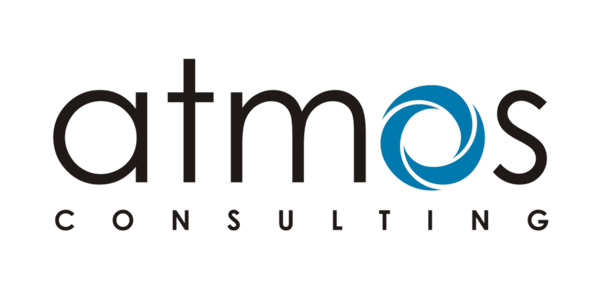Optimising renewable energy through GIS
Renewable energy companies need to assess the availability of natural resources – such as wind, waves and water – and then balance this against a host of other environmental, commercial, physical and social issues, all within a rigorous planning process. Atmos Consulting uses Esri’s ArcGIS platform to advise its clients and identify the sites that will deliver the most energy, at the lowest environmental and monetary cost.
The Customer
Atmos Consulting Ltd (Atmos) is a leading independent environmental consultancy specialising in the complex task of finding the best site for renewable energy projects such as wind farms, hydro-electricity and biomass. Clients are utilities, developers, industry, communities and the public sector.
ArcGIS enables Atmos to make confident and clear recommendations to its clients based on accurate and meaningful data
Thorough GIS analysis minimises the risk of delayed or refused planning permissions, which waste clients’ time and money
Having GIS capabilities on every desktop facilitates faster project turnaround times and improves service
The Challenge
To excel, Atmos needs to help clients identify sites that will maximise the energy generated and optimise profitability, while minimising environmental impact. They must also provide convincing, robust evidence that the site meets planning requirements.
Atmos relies on geographic information system (GIS) technology to consolidate, analyse and present vast quantities of data. “GIS underpins everything we do”, says Fraser Mackenzie, a Director of Atmos.
The firm was using several separate desktop GIS solutions, but with a growing workload, it was increasingly difficult to manage its geospatial data. Furthermore, having various single-user licences and no central geospatial database, meant geospatial data was not accessible to all staff. “The systems that had worked very well while the company was small were no longer appropriate for the size of business that we had grown into” explains Lucy Arnold, senior GIS and data manager. “Doing nothing was not an option,” states Mackenzie.
By gaining a detailed understanding of all of the issues, we can provide expert advice and a high quality service to our clients
Lucy Arnold – Senior GIS and Data Manager
The Solution
Atmos selected a single, central repository for all its geospatial information, with a robust infrastructure for delivering GIS services to staff. Using Esri’s ArcGIS Server, Atmos centralised its diverse geospatial assets and implemented a two-tier approach. Their GIS specialists have advanced ArcGIS tools for in-depth analysis, editing and presenting data, while their general users view maps through an ArcGIS-driven intranet application, known as the Spatial Information Delivery and Analysis web (SPIDA-web), which enables them to quickly find the information they need.
ArcGIS Server also enables Atmos to create sophisticated models, such as statutory bird collision risk analysis. Once built, they can re-use the model, instead of having GIS specialists repeating time-consuming procedures.
ArcGIS helps us to identify the most appropriate locations for projects in a much shorter period of time
Fraser Mackenzie – Director at Atmos
The Benefits
Atmos condenses complex analysis into clear, simple recommendations. “ArcGIS enables us to perform a deeper level of analysis of the environmental, commercial, physical and social constraints at potential sites”, says Arnold. “By gaining a detailed understanding of all of the issues, we can provide expert advice and a high quality service to our clients.” The ArcGIS models are repeatable and consistent. “The data that we produce from our models is robust, transparent and reliable”, says Arnold. “That means that the authorities can have confidence in our analysis.”
Reduced risk for clients
A delayed or refused planning consent wastes time and money, but Atmos minimises this risk. “There is no such thing as an easy site” muses Mackenzie, “but we can steer developers clear of sites where our analysis shows it will be almost impossible to get permissions.” Maps generated by ArcGIS are included in Environmental Impact Assessments and can be crucial in demonstrating full consideration of all potential impacts: around 90% of Atmos’ planning submissions are approved. “The quality of the maps in our reports really does help”, says Mackenzie.
Faster project delivery
Atmos evaluates potential sites more quickly, partly through ArcGIS automated analysis models. It takes a few minutes to run ornithology queries for which data had to be manually collected in the past. “ArcGIS helps us to identify the most appropriate locations for projects in a much shorter period of time”, says Mackenzie. “Most of our clients’ projects are time-critical”, explains Mackenzie. “Having GIS capabilities on every desktop helps to speed up the turnaround time of projects.” Using SPIDA-web, staff can easily access up-to-date maps and overlay current data, responding quickly and knowledgeably to client enquiries.
More efficient operations
GIS specialists no longer have to respond to low-level enquires, and now focus on tasks that add greater value. “We have taken the simple work away from the GIS team, leaving these specialists free to do other, more complex analysis projects that really do need their expertise”, Arnold says. Because ArcGIS provides a single repository for spatial data and maps, maintaining information assets is simpler and quicker. Previously, every time a map was updated, a new pdf had to be issued; now all staff access the latest maps via SPIDA-web.
New markets
Capitalising on the expertise of its GIS team, Atmos is investigating marketing its GIS analysis services, moving GIS from a business support function to a core service area, making Atmos a bigger, more diverse environmental energy consultancy. “GIS is fundamental to all our future plans,” concludes Arnold.



